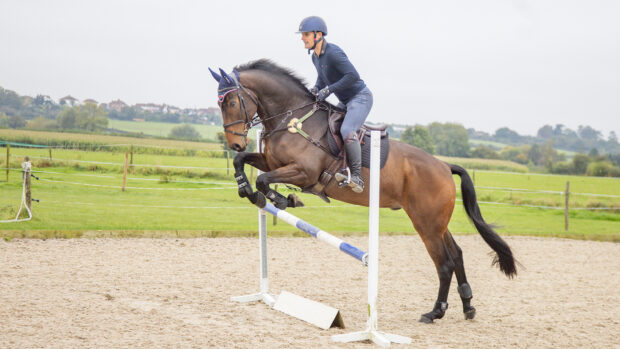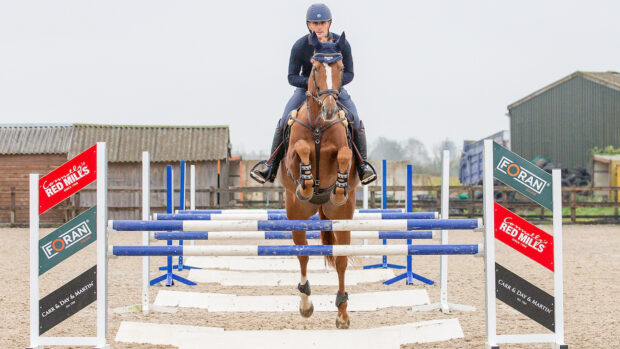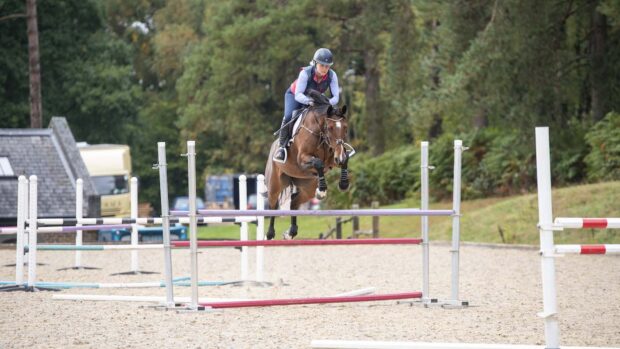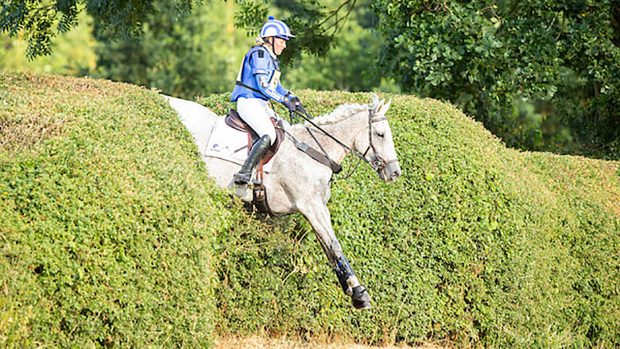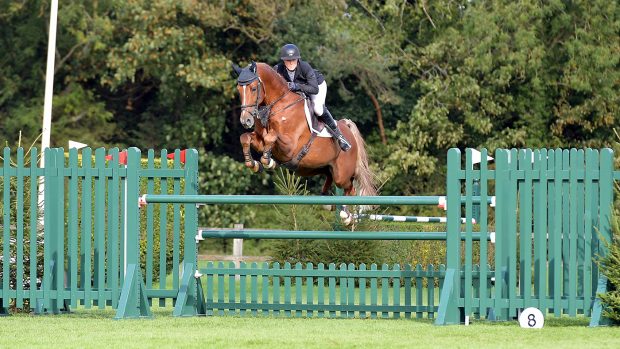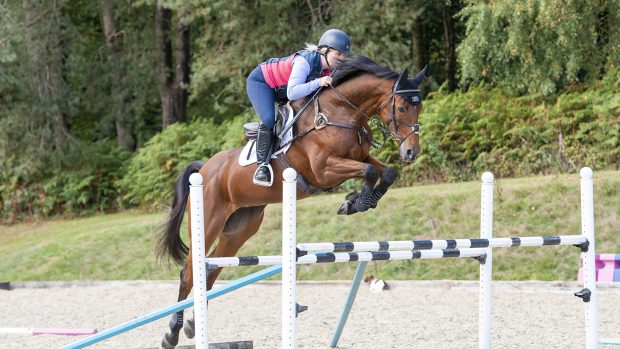Gridwork exercises for horses
Gridwork exercises for horses can help improve their jumping technique, as well as tackling specific problems, such as horses who rush, horses that frequently knock poles down in front or behind, and those that lack confidence or are just starting to learn how to jump. They encourage the horse to come off the forehand and learn to process the questions in front of them more quickly. Gridwork is also useful for riders to hone their jumping position, while allowing the horse to focus on the jumps in front of them.
So which are our some of our top riders’ favourite gridwork exercises for horses and what problems do they help with? Here are four favourites for you to choose from…
Laura Collett’s basic grid exercise
This simple grid is designed to improve coordination, collection and sharpness in horses of all types and ages.
Laura says: “I find it a great exercise to use between events for the older horses as it allows them to use all their muscles without overdoing the jumping.”
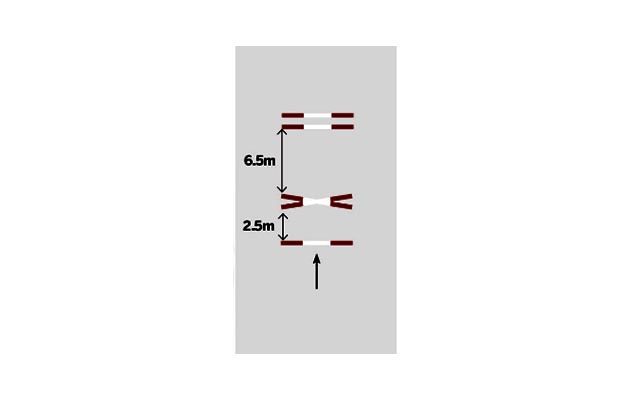
“Create your line by placing a trot pole to mark the start then, approximately 2.5m away, build a cross-pole, followed, roughly on a 6.5m distance, by an oxer. The size of the fences depends on the horse’s experience,” explains Laura
“Ensure your horse remains straight on the approach and when he lands and approach each time off the opposite rein so you are working a large figure of eight. Provided the horse jumps correctly throughout, one approach on each rein is sufficient before the test is altered slightly, maybe by making the oxer larger or wider, or the cross pole a little higher.
“After completing this exercise confidently, jump the oxer on an angle in canter without removing the cross-pole. Ride past the cross-pole close to the upright/wing to get to the oxer. Do this on both reins in a figure of eight. This exercise ensures the horse is coming up through his shoulder and is useful for cross-country riding.”
Imogen Murray’s grid of bounces
This grid helps to improve the horse’s footwork and jumping technique, while allowing the rider to focus on their position. It also helps create independence in the horse because has to work everything out for himself, which ultimately makes him more agile.
Imogen says: “I use this simple row of four fences on bounce distances with all my horses. It can add variety to your jump training and is a good exercise where the horse does most of the work, encouraging him to really use himself and work out where to put his feet.”
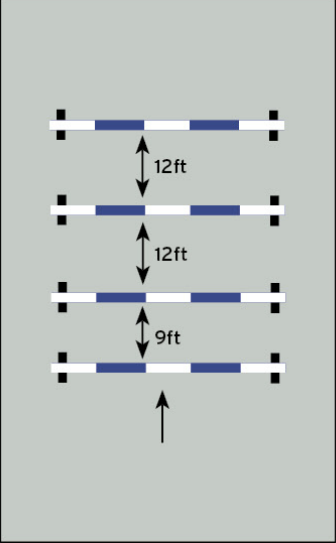
“Depending on the age and experience of the horse, start with poles on the floor where the bounces would be,” says Imogen. “The poles should be placed at 3.6m (12ft) intervals. The first pole should be 3ft closer to the second, as this will act as a place pole for the first fence.
“If the horse is young, I suggest trotting over the poles on the floor a few times first to get them used to where everything will be.
“Then raise the second pole — about 60-80cm — and approach in trot. Raise each fence, one at a time, until all fences are up and there are three bounces.
“If the horse is jumping down the grid with ease and confidence, add an oxer one stride after the final bounce. Continue to approach in trot as this means the horse has to create his own power without rushing, usually resulting in a better technique.”
Vittoria Panizzon: a grid to improve your horse’s bascule
This exercise — which builds up to a cross-pole followed by three wide parallels approached in trot — helps a horse who isn’t making a good shape over a fence to make their bascule rounder.
Vittoria explains: “It improves the horse’s push from behind, encourages them to sit back, punch and pick up. It will make those who rush back off, and teaches them how to look after themselves.”
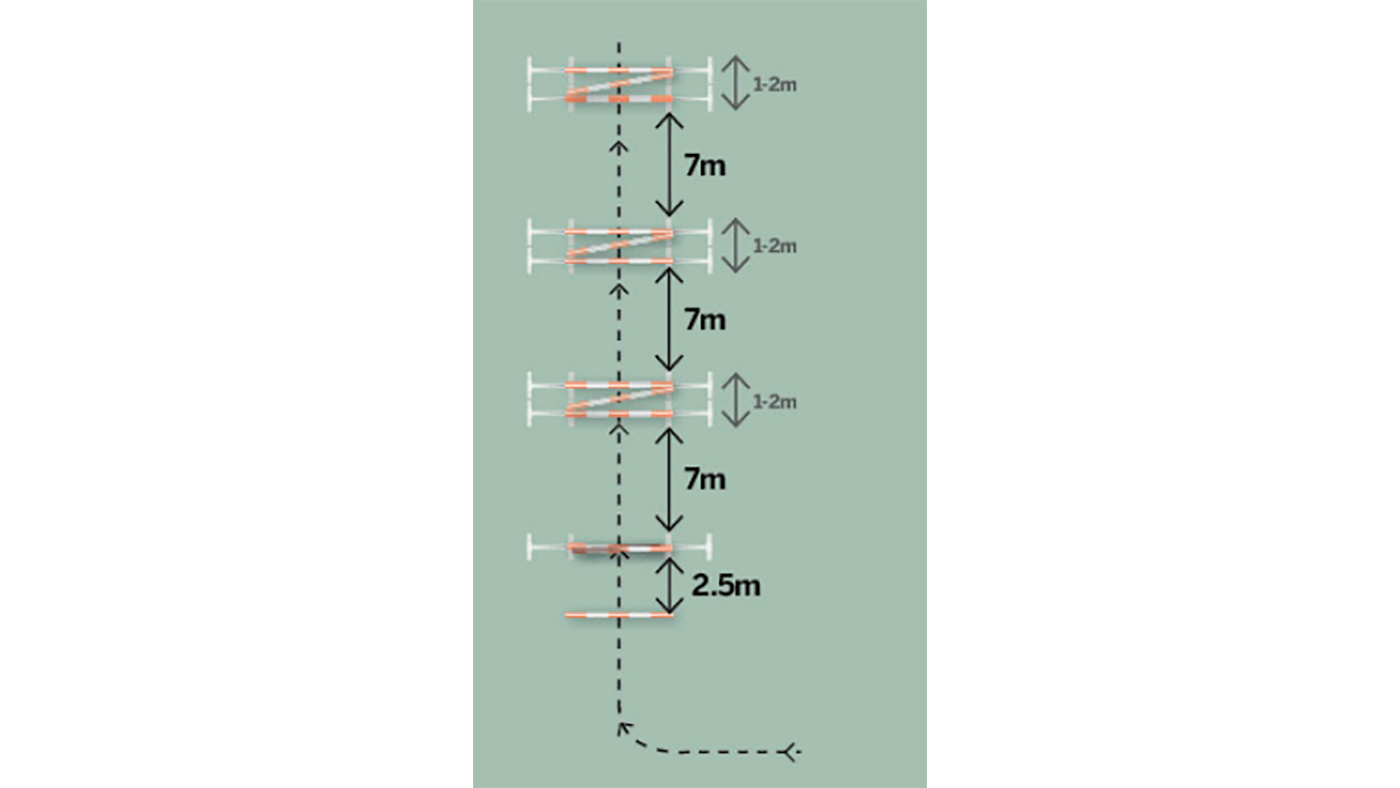
“Set up a small cross-pole with a trot-pole preceding it at a 2.5m distance,” saya Vittoria. “Approach in trot and repeat until the horse is jumping through calmly.
“Add in the other elements of the grid one at a time, always with a groundline in front. Next is an upright — the front part of the first parallel — placed about 7m from the cross-pole. Then the back rail, and so on, until there is three parallels to jump, initially with about 7m between each fence.
“You don’t want the parallels too high (90cm-1m is ample), but they should be widened by 5-10cm each time, up to almost 2m for experienced horses. Consequently, the striding between them will shorten — to closer to 6m than the original 7m.
“Jump through each altered grid once or twice. To get the horse really lifting his shoulders, I sometimes change the final parallel into an upright.”
Alex Bragg’s grid to teach the horse to hold a line
This exercise teaches a horse not to deviate from the line set up by the rider. The rider’s job is to present your horse in the right rhythm and balance on the line, then the horse does the rest.
Alex explains: “This exercise not only teaches the horse not to rush, it also teaches them to stay on a straight line and place their front feet exactly where I want them to be in front of a jump.”
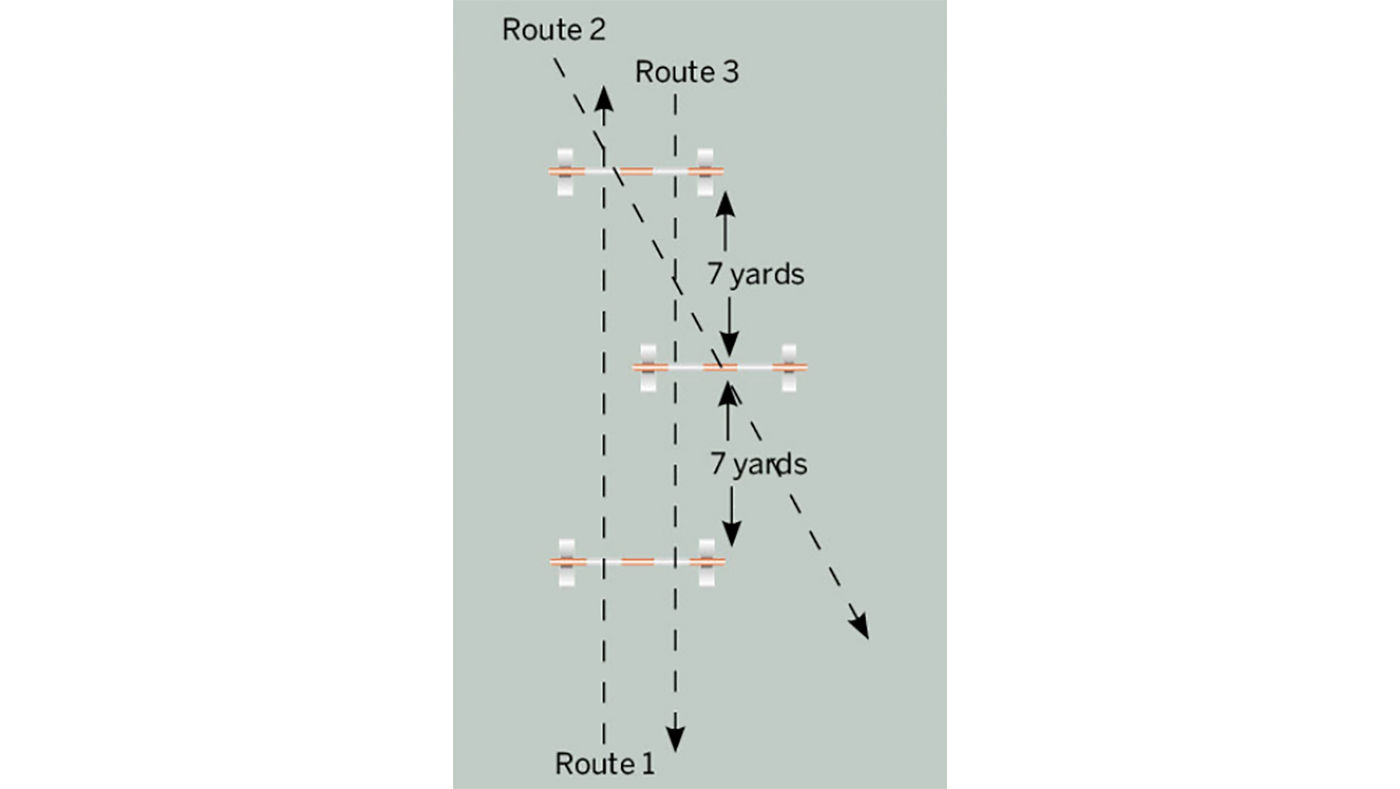
“Build three upright fences with seven yards between each, and with the middle one offset by four to five feet,” says Alex. “If your horse is inexperienced, use poles on the ground instead, raising them to cavaletti height and finally turn them into jumps.
”Approach in a jumping canter and ride a square, balanced turn, lining your horse up to jump element one and three, bypassing element two (route one). Attempt this a few times until your horse is staying on the line.
“Then switch to jump from element three to two or two to one (route two) on a diagonal line.
“Provided your horse is looking ahead and picking up, tackle the most difficult line, jumping all three elements (route three). Element two can be moved inwards to make it wider for youngsters. Make the fence narrower as your horse gains confidence.”
Gridwork exercises for teaching young horses
When using grids to teach a young horse to jump, you should start with poles on the ground and introduce the fences one at a time, only adding the next fence when the horse is jumping confidently through the previous exercise.
While gridwork exercises for horses can be very useful, it is important to remember that for competition horses and their riders have to be confident cantering to a fence without any ground poles or other fences to help them find the correct distance. For this reason gridwork should be used alongside jumping single fences and practising jumping courses.
